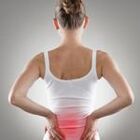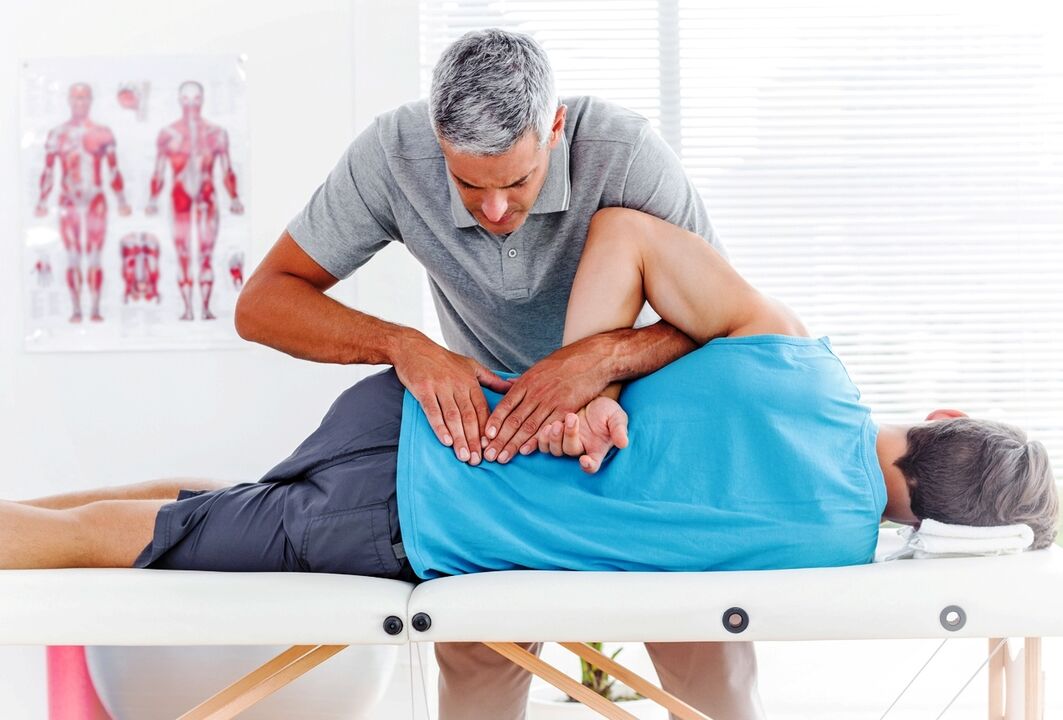
Low painIt indicates a disease or damage to the spinal column, nerve structures, soft tissues, internal organs, are observed in hectic state of different genesis.It is acute, stupid, constant, periodic, burnt, shooting, explosion.Sometimes it is associated with physical activity, changes in weather.Pathologies, manifested by back pain, are diagnosed on the basis of complaints, anamnesis, examination data and additional studies: Radiography, MRI, CT.Before making a diagnosis, peace is needed, sometimes it is allowed to use ointments, taking analgesics.
Why do you hurt the lower back
Spinal cord
A common cause of back pain are congenital abnormalities and acquired diseases of the spinal column.The nature of the pain syndrome varies.Pain directly caused by the pathological process, often periodic, local, hurt or attract, associated with weather, physical activity, stay in an unpleasant position.
Due to muscle spasm, the lumbago (lateral) occurs a sharp pain associated with the restriction of movements.With many spinal pathologies, lumboyshialgia is observed - pain, burning or firewood, which radiates to the back of the thigh.Painful sensations are often found in radical syndrome.Can be detected in the following diseases of the spinal column:
- Degenerative pathology: Osteochondrosis, extension of the intervertebral disc, intervertebral hernia, spondylosis, spondylo arthrosis.
- Congenital abnormality: Success, lumbarization.
- Polyetological: Spondylolis, spondylolist.
- Vascular: Spinal cord violations.
- Other diseases: Disease of hardness.
- Secondary lesions of nerve structures: Lumbosakral radiculitis, lumbosakral plexitis, myelopathy of various genesis.

Curvature of the spine
Small or moderate painful pains are observed for all types of curvature of the spinal column, which is associated with non -voleological load redistribution, muscle overvoltage and spine ligaments.The pain appears as a result of an unpleasant body position, sleeps on a very strong or very soft bed.The symptom is associated with:
- Lordosis;
- Kyfosis;
- scoliosis;
- Kyfoskoliosis;
- Flat rear syndrome.
Osteoporosis
The attraction or pain of painful sensations in the lumbar and thoracic spine for a long time are the only symptoms of osteoporosis.Pain syndrome is explicitly expressed, intensifies after load, before changing weather conditions.Symptoms are observed in the following varieties of osteoporosis:
- postmenopausal;
- New;
- idiopathic;
- elderly
Similar pains are detected in patients with secondary forms of pathology, due to genetic diseases, endocrine disorders, chronic intoxication and taking some medication.Secondary osteoporosis can also occur against the backdrop of malabsorption syndrome, liver disease, KHPN, rheumatoid arthritis, well.
Strengthening pain, increased pain duration can be associated with the development of a pathological fracture.Other signs of trauma are often not expressed, so fracture often remains diagnosed.
Spinal cord
The most common damage is to bruise the spinal column.In mild cases, the pathology is manifested by moderate pain of the lower back, intensifying during movements, local edema, and sometimes hematoma and hemorrhage.In severe bruises, neurological disorders are added to the symptoms listed.
The compression fracture of the lumbar back occurs due to the violent bending of the body.It is characterized by sharp pain, keeping breathing at the time of damage.Then, there is an increase in pain in the case of bodies curves, soft tissue edema is detected.Palpation of the spinoz process is painful.Other potential fractures include damage to bows, transverse processes, spinose processes.
In addition, back pain is found in patients with traumatic spondylolistize and subluxation of vertebrae.Painful sensations are paroxysmal, resembling lumbago, complemented by a sense of severity and numbness of the lower extremities.
Soft tissue and kidney injuries
Soft tissue injury is associated with insignificant local pain or moderate at local speed, minor edema.Hemorrhages are possible.There is no blood in the urine.The kidney bruises are manifested by short -term pain and irrelevant hematuria.In case of kidney damage, painful syndrome is intense, pain radiates to the lower abdomen, groin and genitals.A hematoma is visible in the lumbar region.In severe cases, severe pain, prolonged macrohematuria is observed.The condition of the shock develops.
Spine and spinal infections
The osteomyelitis of the spine can be hematogenous, post -traumatic, contact, after surgery.The acute form of the disease manifests itself by rapidly increasing back pain, combined with chills, fever, intoxicating syndrome and a general condition.Pain of pain, the outbreak, so intense that they prevent any movement, force the patient to freeze in bed.In chronic osteomyelitis, the manifestations are softened, a fistulosis course is formed with divided purulent.
Spinal column tuberculosis develops gradually.At first, deep periodic pain is observed, improve after load, increased skin sensitivity to the projection of the affected vertebrae.Walking stiffness is formed.In contrast to the backdrop of considerable destruction of bone structures, the nature of the pain changes, as it is caused by compression of the nerve roots.The pain becomes burnt, radiates in the leg, supplemented by paresthesia, numbness.
In patients with epidural spinal abscess, the pain is severe, deep, shed, combined with chills, hyperthermia, muscle tension.Touching in spinous beads processes is painful.With the progression of the pathology, turkey syndrome occurs, then paresis, pelvic organs disorders develop.
Local inflammatory processes
Purulent processes in surface tissue and near soil fibers are associated with intense back pain.The potential causes of pain syndrome are Vlora, Karbuna and Paranephritis.
In the first two cases, the abscess is formed on the skin, it looks like a limited, sharp painful seal with a diameter of 1 cm purple or red-blue shade with one or more rods in the center.Pain intensifies quickly, becomes inflamed, pulsating, losing sleep.General hyperthermia, is observed insignificant or moderate violation of the general state.
With paranefit, at first a pronounced fever occurs at the beginning.Pain syndrome develops after 2-3 days.The pains are very intense, can be given to the stomach or hypochondrium, intensify when walking, moving, deep breathing.In some forms of paranefit due to pain, the patient takes a forced position.The lumbar muscles are tense.Edema, local hyperemia, hyperthermia are detected.The situation is serious.
Infectious
Painful pain of pain in the lower back, causing a desire to change the body's position, are characteristic of acute infections, associated with an increase in temperature and intoxication syndrome.In most cases, they are due to myositis, often combined with pain in the limb muscles.Observed with flu, tonsils, acute viral respiratory infections.Sometimes the pain is provoked by kidney damage.Infectious diseases associated with pain in the lower back area include:
- hemorrhagic fever;
- Japanese mosquito encephalitis;
- Ebola fever;
- foot and mouth disease;
- severe form of coronavirus infection;
- Generalized forms of bacterial, fungal, viral infections.
In a number of patients, back pain is observed with a cytokine storm - an inflammatory reaction that develops against the backdrop of severe infectious diseases.Epidemiological myalgia is associated with intense paroxysmal pain for up to 10 minutes, which appear not only in the lower back, but also in other parts of the back, in the area of the abdominal wall, chest, limbs.Repeat with an interval of 30-60 minutes.Combined with rhinitis, conjunctivitis, severe hyperthermia.
Other muscle lesions
Painful pain in the muscles of the lumbar region is determined after intense physical exercise - the performance of strength exercises for the back muscles, a long stay in a forced position with a tense spine.Myalgia softens at rest, intensifies during movements, weakens after heat, regular heat, disappears after a few days.
Myoses develop not only with infectious diseases but also after hypothermia or overload, against the backdrop of exogenous intoxication, metabolic disorders.Coupled with painful long -term pain.There are also special forms of myositis:
- specific infectious myosite for syphilis and tuberculosis;
- Idiopathic, juvenile dermatomyositis and polymosite;
- Polymiositis and dermatomyositis for oncological pathology, systemic connective tissue disease.
Chronic diffuse pain throughout the body, including the lower back, are observed with fibromyalgia.They are combined with sleep disturbances, asthenia, neurotic disorders.
Other diseases
In addition to the listed pathologies of the lower back, they may bother with conditions such as:
- Spine tumor, spinal cord: sarcoma, hemangioma, metastases, intramedullary and extragraul neoplasms of the spinal cord.
- Renal disease: Pyelonephritis, glomerulonephritis, urolithiasis, kidney heart attack, renal vein thrombosis, kidney cyst, kidney cancer, purulent processes.
- Hereditary: Cerebellar Heritage Ataksia Pierre-Marie.
- Exogenous intoxication: Abuse of phenylpropanolamine.
- Heart pathology and blood vessels: Endocarditis Leffler, abdominal aortic aneurysm.
- Urgent: Shock hemotransfusion.
For pelvic diseases, the pain radiation in the lower back is sometimes observed.The appearance of a symptom is possible with a number of female diseases, prostate cancer, projection, sigmoid.
Troubleshooting
Primary diagnostics is performed by an orthopedic traumatologist.In the presence of the patient's neurological symptoms, the neurologist examines.The doctor interviews the patient, performs an objective examination.According to the testimony, consultations of a surgeon, rheumatologist, urologist and other specialists are appointed.The diagnostic program may include:
- Neurological examination.In the research process, the specialist evaluates reflexes, muscle strength, coordination of movements, deep and superficial sensitivity.
- X -Ray.On lumbar department radiographs, fractures, a decrease in the height of the intervertebral discs, other degenerative changes, volume formations, signs of inflammatory processes and spondylolistesis.If necessary, standard radiographs are supplemented by functional studies.
- Other neuroimaging methods.CT and MRI are used to clarify the radiography data.During calculated tomography, the structure of solid structures is studied in detail, the condition of the ligaments and intervertebral discs is examined in MRI.To exclude stenosis, myelography is performed.
- Functional research.Muscle condition and nerve conductivity are evaluated using electromography, electrical and studies of potentials caused.
- Laboratory.To confirm the infectious nature of the disease, the determination of the pathogen does blood tests and microbiological examination.Serological reactions are used to detect neuroinfections.

According to evidence, an ultrasound of kidneys, prostate, pelvic organs, urine tests, abdominal aorta, other studies and other studies are performed.
Treatment of pain in line
Help in the prehopital phase
With traumatic spine damage, it is necessary to put the patient on the shield and immediately hand over to the medical institution.In case of non -inhumane pain, it is necessary to reduce the load on the back, optimize the position of the body during work and rest.Acute pain syndrome is an indicator for consulting a neurologist.
Before examining experts, a single consumption of analgesics is possible.In lumbago, lumbar -lgia caused by previously diagnosed degenerative diseases of the spine, the use of heat and painkillers of local acts is allowed.If there is a doubt about the presence of an infectious process, local funds are not indicated.
Conservative therapy
The basis of treatment is physiotherapeutic measures and medication therapy.The patient is prescribed a protective regime.Apply the following methods:
- NSAID.Effective in acute and chronic muscles and spine.Used in the form of tablets, local products.
- Neurotropic vitamins.Patients are introduced from B vitamins, which improve the effect of other groups medication, help reduce pain.
- Anesthetics.With stubborn and acute pain, anesthetic therapeutic blockages are performed.To improve the result of treatment, pain sedatives combine with glucocorticosteroids.
- Physics.Apply ultrasound, magnetotherapy, percutaneous electrical stimulation, laser therapy, drug electrophoresis.It is possible to describe massage, manual therapy, acupuncture.
Surgical treatment
Given the traits of the pathology, the following surgical interventions are performed:
- Instability: inter -core spondylodesis, transpositional fixation, tile fixing.
- Tumors, osteoporosis, osteomyelitis, tuberculosis: sequestral, vertebroplastic, kyfoplastic, corporation.
- Intervertebral hernia: dysoctomia, microdiscectomy, nucleoplasty.
- Spinal canal placement: laminctomy, facetectomy, disk punctuation decompression.
In the post -surgery period, analgesics, antibiotics were prescribed.Rehabilitation measures include exercise therapy, massage, physiotherapy.



















